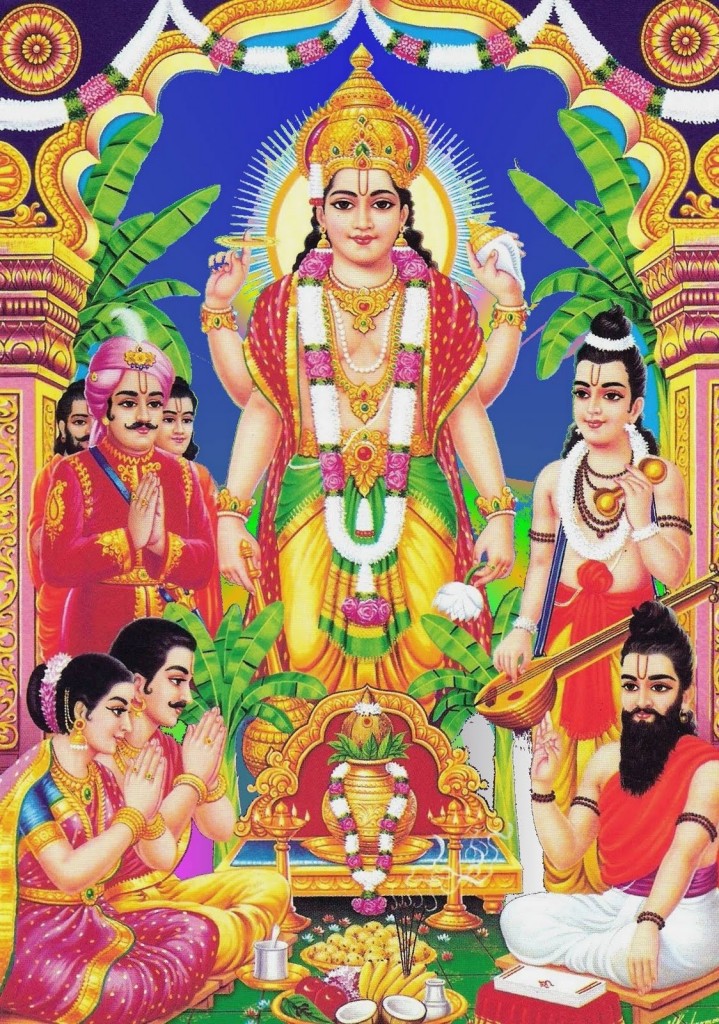 There is a popular puja called the Satya Narayana Katha that is performed regularly by many Hindu families. This puja in generally performed in the home, but may also be done in a temple. The Satya Narayan puja can be performed on any day. It is not a puja confined to any festivities, but (full moon days or sankranti are considered to be most auspicious day for this puja. Performing this puja in the evening is considered more appropriate, however, one can do it in the morning as well.
There is a popular puja called the Satya Narayana Katha that is performed regularly by many Hindu families. This puja in generally performed in the home, but may also be done in a temple. The Satya Narayan puja can be performed on any day. It is not a puja confined to any festivities, but (full moon days or sankranti are considered to be most auspicious day for this puja. Performing this puja in the evening is considered more appropriate, however, one can do it in the morning as well.
On the day of the puja, the devotees should fast and after bathing the puja can begin. This puja is conducted to ensure abundance in one’s life. Many people carry out this puja immediately after or along with an auspicious occasion like a marriage or moving into a new house or any other success in life. In most cases the host will invite many family members and friends. The puja has two parts, the puja proper and the reading of the story (katha) after the puja. The word Satya means truth and Narayana is a form of Vishnu and so the expression means “Narayana the Lord of Truth.” In other words, the puja is a Vishnu puja with a particular story attached. The story purports to be from the Skanda Purana.
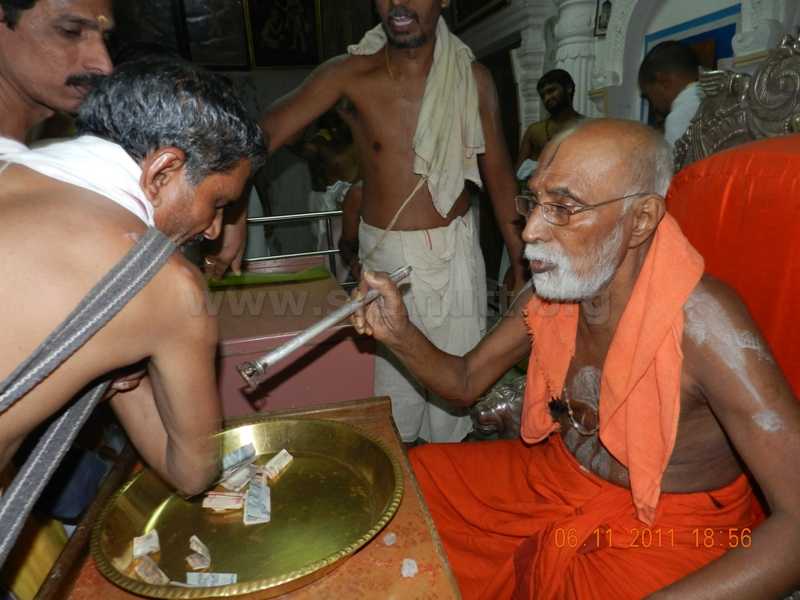 Diksha is a ceremony of initiation and the entering of a religious order (
Diksha is a ceremony of initiation and the entering of a religious order (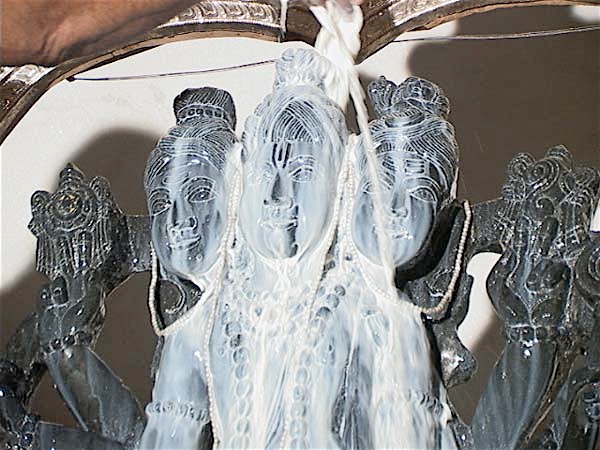 An abhisheka is a religious bathing ceremony. The word abhisheka means a sprinkling. It is derived from the root sic, to wet, and with the prefix abhi,“around,” abhisheka is literally, “wetting around.” An abhisheka is the bathing part of a
An abhisheka is a religious bathing ceremony. The word abhisheka means a sprinkling. It is derived from the root sic, to wet, and with the prefix abhi,“around,” abhisheka is literally, “wetting around.” An abhisheka is the bathing part of a 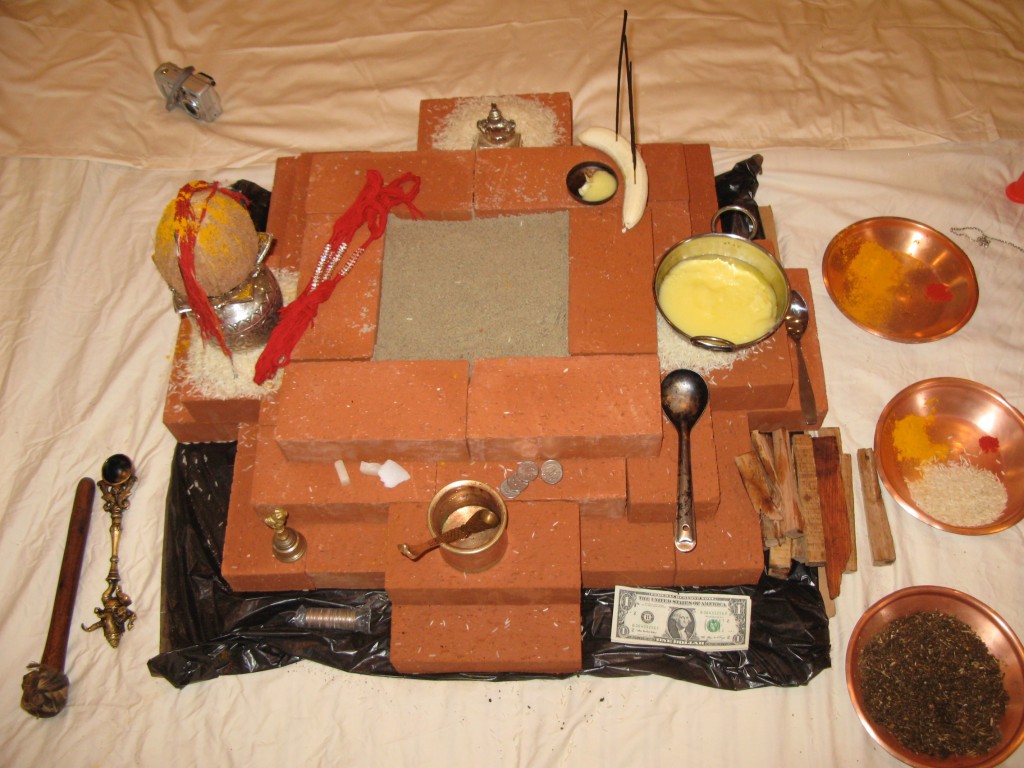 A havan or homa is similar to a
A havan or homa is similar to a 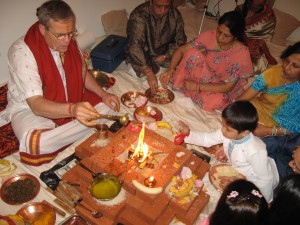 A havan ceremony involves a priest and a host(s) and guests sitting before the kunda while mantras are recited and various items such as ghee, rice, herbs, foodstuffs, and other items are placed into the fire. Through the mantras, fire, is asked to take the prayers and consumed offerings (hence the meaning of hu “to eat”) to the intended Divinity. For example, if one wanted to perform a havan for increased health, one could direct the offerings to the sun Deity, Surya. If one wanted rain, one might direct their prayers and offerings to the rain Deity, Indra. If one wanted to increase luck and general prosperity one could direct Agni to take the offerings to Ganesha and Lakshmi, two Divinities in charge of luck and fortune. In this way, during a havan many Deities may be propitiated with a specific focus on just one or two, depending on the purpose.
A havan ceremony involves a priest and a host(s) and guests sitting before the kunda while mantras are recited and various items such as ghee, rice, herbs, foodstuffs, and other items are placed into the fire. Through the mantras, fire, is asked to take the prayers and consumed offerings (hence the meaning of hu “to eat”) to the intended Divinity. For example, if one wanted to perform a havan for increased health, one could direct the offerings to the sun Deity, Surya. If one wanted rain, one might direct their prayers and offerings to the rain Deity, Indra. If one wanted to increase luck and general prosperity one could direct Agni to take the offerings to Ganesha and Lakshmi, two Divinities in charge of luck and fortune. In this way, during a havan many Deities may be propitiated with a specific focus on just one or two, depending on the purpose.